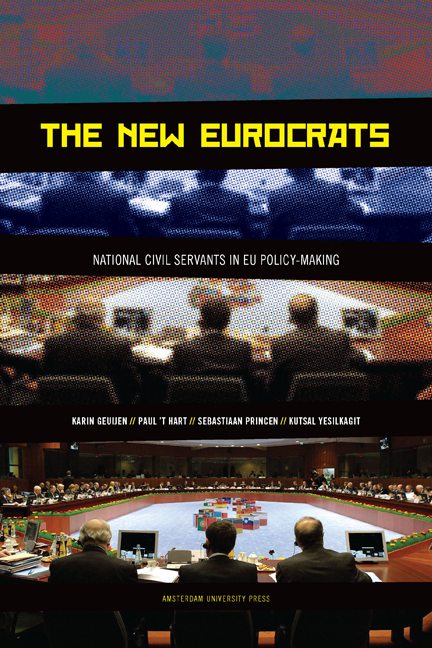Book contents
- Forntmatter
- Contents
- Tables and Figures
- Acknowledgements
- Chapter One Studying Eurocrats At Work
- Chapter Two Toward a Europeanised Civil Service? a Survey Study
- Chapter Three Eurocratic Work As Strategic Behaviour: Moving Before the Commission Does in Veterinary Policy
- Chapter Four Getting Things Done in European Police Co-Operation
- Chapter Five Bridge Builders Or Bridgeheads in Brussels? the World of Seconded National Experts
- Chapter Six Understanding Eurocratic Work: Conclusions and Reflections
- Appendix: Items on Europeansation Included in the ‘Pomo’ Survey
- Notes
- Bibliography
- About the authors
- Index
Chapter Five - Bridge Builders Or Bridgeheads in Brussels? the World of Seconded National Experts
Published online by Cambridge University Press: 15 January 2021
- Forntmatter
- Contents
- Tables and Figures
- Acknowledgements
- Chapter One Studying Eurocrats At Work
- Chapter Two Toward a Europeanised Civil Service? a Survey Study
- Chapter Three Eurocratic Work As Strategic Behaviour: Moving Before the Commission Does in Veterinary Policy
- Chapter Four Getting Things Done in European Police Co-Operation
- Chapter Five Bridge Builders Or Bridgeheads in Brussels? the World of Seconded National Experts
- Chapter Six Understanding Eurocratic Work: Conclusions and Reflections
- Appendix: Items on Europeansation Included in the ‘Pomo’ Survey
- Notes
- Bibliography
- About the authors
- Index
Summary
Living and breathing the Brussels bureaucracy
The foregoing chapters have demonstrated the extent to which national civil servants are involved in EU-related activities, and the dynamics of national administrative activities in the context of the EU. This chapter shifts the focus from national civil servants working on the European Union to national civil servants working for the European Union. This is a class of national civil servants for whom finding a balance between national and European interests in their work is a permanent, although sometimes implicit, feature of their daily professional activities. The duality of national and European roles is perhaps the most exacerbated for the seconded national experts (SNEs, see also chapter 3), national civil servants who are temporarily working for EU institutions, in particular those seconded to the European Commission. On the one hand, Commission SNEs have to be loyal to the Commission and represent European interests in this supranational organ of the EU, while on the other hand, their employer remains the member state government, and they are thus expected to return to their home organisation after their secondment term ends. Therefore, the SNEs are practically torn between two employers: their daily employer under whose supervision they work (the Commission) and the national employer who sent them on the secondment and continues to pay their salaries (the member state).
Besides these atypical terms of employment, SNEs also form a particular group of European civil servants in terms of their position at a crossing point of European and national governance at the micro level. This key position stems mainly from their presence in the beginning phase of the EU legislative process by working for the Commission. As has been argued in chapter 3, SNEs are potentially key strategic instruments for the member states in manoeuvring policy proposals. Conversely, SNEs are key resources for the Commission to sound out the acceptability of a particular proposal for a given member state. This reciprocal gain, however, can only work if there is an ongoing flow of information between the Commission and the member state through the SNE. By virtue of the flow of information, SNEs can play a major role in linking the European and the national level through their networks or ‘know-who’ at both levels. To the extent that these networks are maintained, both the Commission and the member state can benefit optimally from the ‘know-how’ of SNEs.
- Type
- Chapter
- Information
- The New EurocratsNational Civil Servants in EU Policy-making, pp. 103 - 128Publisher: Amsterdam University PressPrint publication year: 2008

